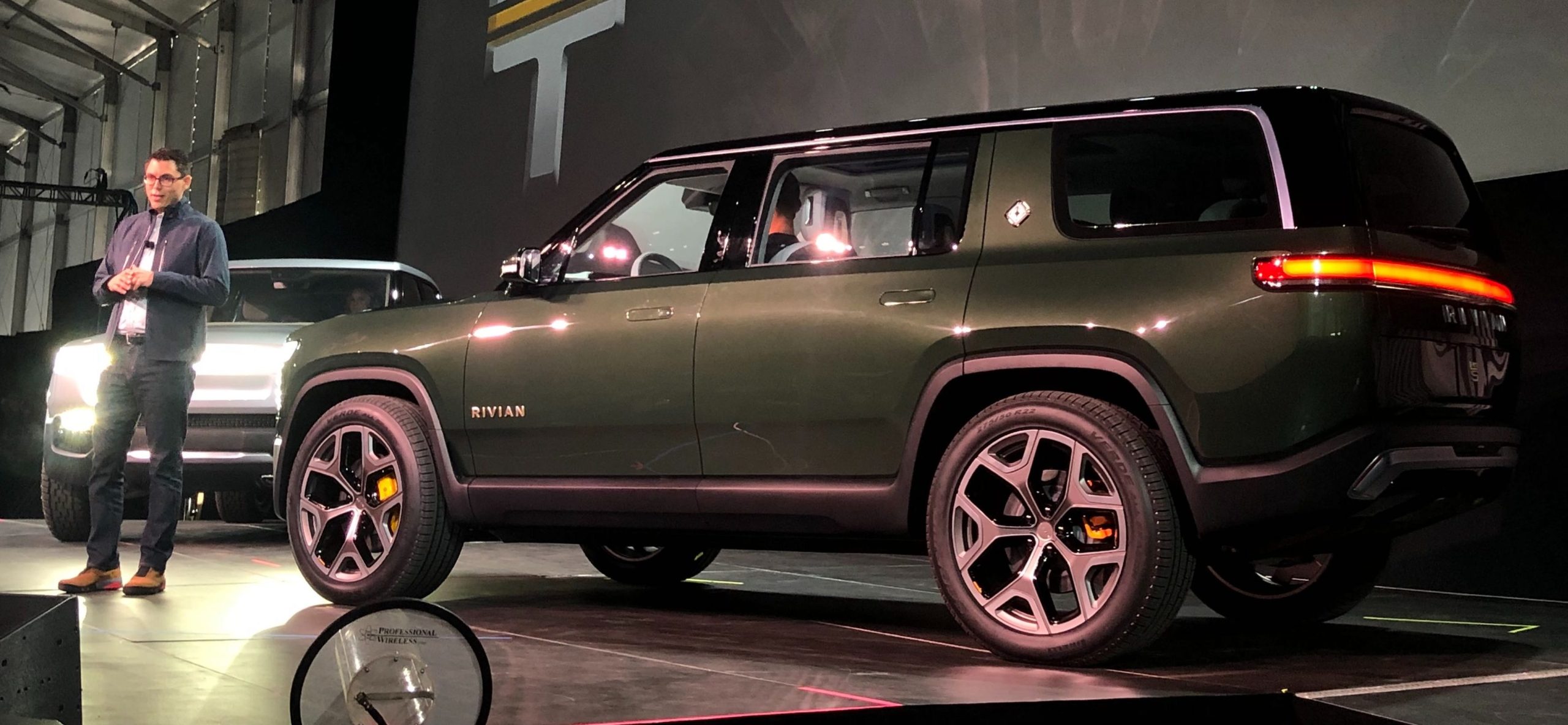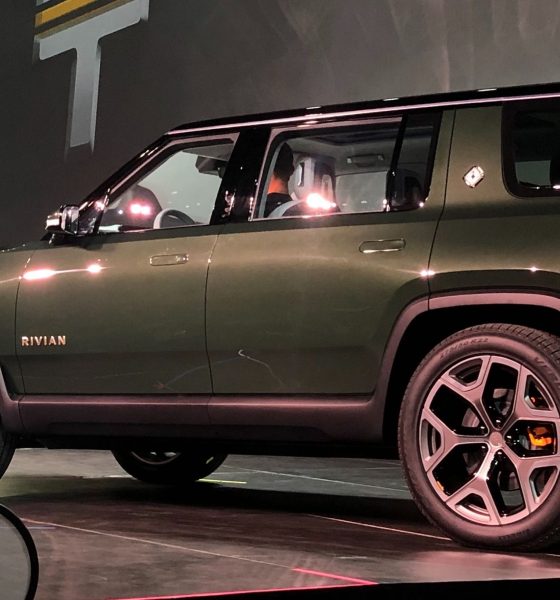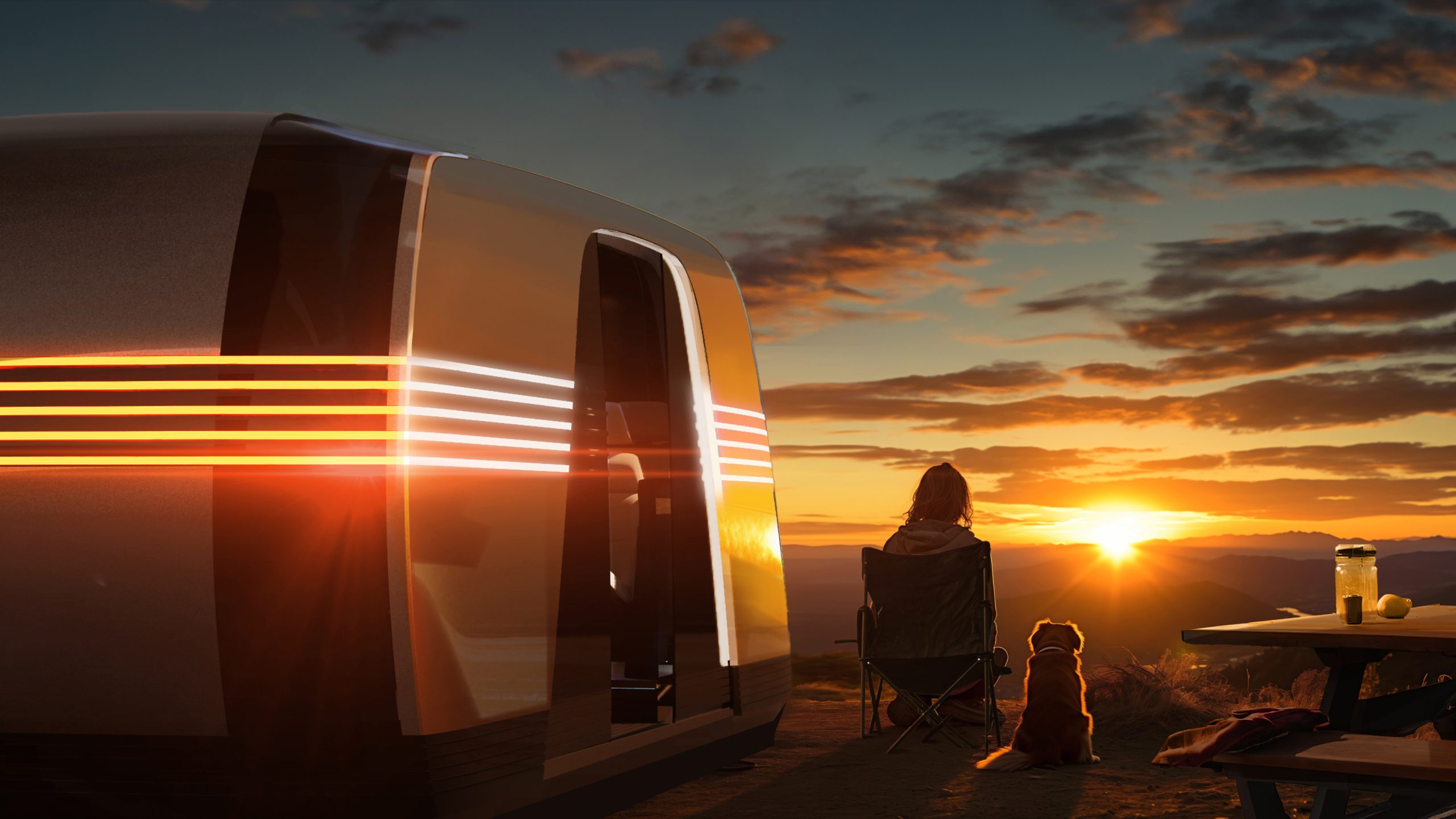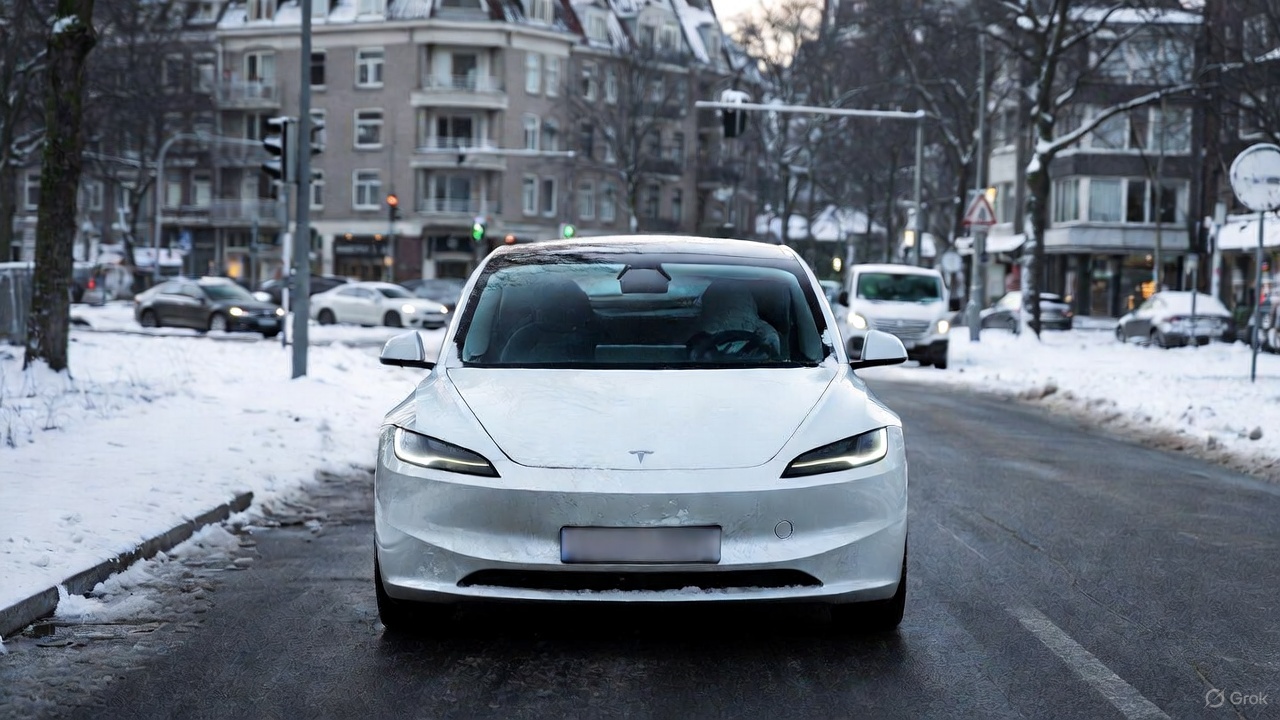

News
Tesla gets nod from Rivian CEO for combating ‘untruths’ about electric vehicles
The long, arduous road that Tesla traveled over the past years was recently acknowledged by RJ Scaringe, the 35-year-old CEO of electric vehicle maker Rivian. During a fireside chat at the Automotive News World Congress, Scaringe noted that his 10-year-old company aims to do to pickup trucks and off-road-capable SUVs what Tesla did to the performance and premium automotive segments. That is, he wants Rivian to disprove any untruths that are currently prevalent in the truck and SUV industry.
“I think any great brand … to build a brand that customers are going to be excited about and that customers are going to want to be part of, it has to fundamentally reset expectations. It has to disprove untruths. Tesla took the untruth that electric cars were boring and slow — that they were glorified golf carts — and they disproved that. They showed people that an electric car can be exciting and fun. What we need to disprove is that an electric vehicle can’t get dirty, and that an electric vehicle can’t be rugged, and an electric vehicle can’t go off-road and take your family places, and that an off-road vehicle can’t be good on-road,” he said.
Rivian’s first two vehicles, the R1T pickup truck and the R1S SUV, seem perfectly capable of playing the part. Rivian impressed the EV community and the auto industry when it emerged after 10 years of operating on stealth mode. Both vehicles are well-rounded and refined, created through years of work by a team that included alumni from McLaren (yes, that McLaren). Both have four electric motors that provide immense power and torque, both offer range of over 400 miles per charge, and both are built with intelligent driver-assist features that can transition into full self-driving in the future. During the R1T’s unveiling last November at the historic Griffith Observatory in Los Angeles, Rivian’s intentions of tapping into the premium EV market were evident.

During his recent fireside chat, Scaringe mentioned that the market Rivian is going for are people who own adventure vehicles and luxury vehicles. In a later statement, Scaringe expressed a point related by Elon Musk during the days of the original Roadster, when he noted that the small, two-door high-performance sports car should perform on the same level as the best fossil fuel-powered cars around. For Scaringe, this same point stands true for the R1T and the R1S.
“We want to get the guy who already has a Range Rover sitting next to a Tesla [in the garage], or the [Jeep] Wrangler sitting next to the [BMW] i3, and grab them with something that was just completely different than what they thought was possible. It will be the best-driving truck or SUV in the world. It must be, because if it’s not, why would somebody pick us over a Ford or over a BMW?” he said.
For now, though, Scaringe noted that Rivian is determined to learn from the experiences of companies like Tesla, while integrating concepts from established automakers such as GM and Toyota. With the successful unveiling of its first vehicles, after all, Rivian is about to tackle one of the hardest parts of being an automaker — actually building cars.
“We do recognize the complexity of assembling and putting vehicles together, of managing a very complex supply chain and logistics network, and we’re very [cognizant] of the nuts and bolts, and of the need to follow a proper process to ensure that, when we launch the vehicle, it can be launched with as few problems, errors, and challenges as possible,” Scaringe said.

When Elon Musk wrote his Master Plan Part Deux, he openly admitted that it is very difficult to become successful in the United States’ auto market. Considering the number of automakers that have gone under, Musk lightly noted that starting a car company is downright idiotic, and starting an electric car company is “idiocy squared.” As foolhardy as the venture might have been, though, Tesla has thrived, driven by an ever-increasing demand for its premium electric cars and energy storage products. The Model 3, the company’s most affordable vehicle to date, has been making a dent in the US’ auto market, becoming the overall best-selling luxury car in the country last year.
It has not been easy for the Silicon Valley-bred carmaker. The Model 3 ramp, for one, is described by Elon Musk as one of the most difficult periods of his career. Musk bet Tesla’s future in the electric sedan, and it took longer than expected to reach the company’s self-imposed production targets. Nevertheless, since hitting its goal of producing 5,000 Model 3 per week at the end of Q2 2018, Tesla has steadily improved its footing with the electric car’s production. In Q3 2018, Tesla even posted a profit. The fourth quarter of 2018 might be just as successful.
If Rivian’s strategy so far is any indication, though, the company stands a good chance of avoiding some of the challenges faced by Tesla during the ramps of the original Roadster, the Model S, X, and 3. Rivian, for one, has already secured a facility in Normal, Ill. The company is also working closely on the development of its vehicles’ battery packs. Apart from this, Rivian is also consulting the veterans of the auto industry. In his recent appearance at Autoline After Hours, for one, auto teardown specialist Sandy Munro, who conducted a thorough analysis of the Tesla Model 3, mentioned that Rivian is one of his firm’s clients.

News
Tesla AI and Autopilot VP hints that Robovan will have RV conversions
Tesla’s vice president of AI and Autopilot software, Ashok Elluswamy, hinted at the linitiative in a reply to Y Combinator CEO Garry Tan.

It appears that Tesla is indeed considering an RV in its future pipeline, though the vehicle that would be converted for the purpose would be quite interesting. This is, at least, as per recent comments by a Tesla executive on social media platform X.
Robovan as an RV
Tesla’s vice president of AI and Autopilot software, Ashok Elluswamy, hinted at the linitiative in a reply to Y Combinator CEO Garry Tan, who called for a startup to build RVs with Full Self-Driving capabilities. In his reply, Elluswamy simply stated “On it,” while including a photo of Tesla’s autonomous 20-seat people mover.
Tesla unveiled the Robovan in October 2024 at the “We, Robot” event. The vehicle lacks a steering wheel and features a low floor for spacious interiors. The vehicle, while eclipsed by the Cybercab in news headlines, still captured the imagination of many, as hinted at by X users posting AI-generated images of Robovan RV conversions with beds, kitchens and panoramic windows on social media platforms. One such render by Tesla enthusiast Mark Anthony reached over 300,000 views on X.
Elon Musk on the Robovan
Elon Musk addressed the Robovan’s low profile in October 2024, stating the van uses automatic load-leveling suspension that raises or lowers based on road conditions. The system maintains the futuristic look while handling uneven pavement, Musk wrote on X. The CEO also stated that the Robovan is designed to be very airy inside, which would be great for an RV.
“The view from the inside is one of extreme openness, with visibility in all directions, although it may appear otherwise from the outside. The unusually low ground clearance is achieved by having an automatic load-leveling suspension that raises or lowers, based on smooth or bumpy road conditions,” Musk stated.
Elluswamy’s response on X suggests that Tesla is considering a Robovan RV conversion, though it would be interesting to see how the company will make the vehicle capable of reaching campsites. The Robovan has a very low ground clearance, after all, and campsites tend to be in unpaved areas.
News
Tesla tinkering with Speed Profiles on FSD v14.2.1 has gone too far

Tesla recently released Full Self-Driving (FSD) v14.2.1, its latest version, but the tinkering with Speed Profiles has perhaps gone too far.
We try to keep it as real as possible with Full Self-Driving operation, and we are well aware that with the new versions, some things get better, but others get worse. It is all part of the process with FSD, and refinements are usually available within a week or so.
However, the latest v14.2.1 update has brought out some major complaints with Speed Profiles, at least on my end. It seems the adjustments have gone a tad too far, and there is a sizeable gap between Profiles that are next to one another.
Tesla FSD v14.2.1 first impressions:
✅ Smooth, stress-free highway operation
✅ Speed Profiles are refined — Hurry seems to be limited to 10 MPH over on highways. Switching from Mad Max to Hurry results in an abrupt braking pattern. Nothing of concern but do feel as if Speed…— TESLARATI (@Teslarati) November 29, 2025
The gap is so large that changing between them presents a bit of an unwelcome and drastic reduction in speed, which is perhaps a tad too fast for my liking. Additionally, Speed Profiles seem to have a set Speed Limit offset, which makes it less functional in live traffic situations.
Before I go any further, I’d like to remind everyone reading this that what I am about to write is purely my opinion; it is not right or wrong, or how everyone might feel. I am well aware that driving behaviors are widely subjective; what is acceptable to one might be unacceptable to another.
Speed Profiles are ‘Set’ to a Speed
From what I’ve experienced on v14.2.1, Tesla has chosen to go with somewhat of a preset max speed for each Speed Profile. With ‘Hurry,’ it appears to be 10 MPH over the speed limit, and it will not go even a single MPH faster than that. In a 55 MPH zone, it will only travel 65 MPH. Meanwhile, ‘Standard’ seems to be fixed at between 4-5 MPH over.
This is sort of a tough thing to have fixed, in my opinion. The speed at which the car travels should not be fixed; it should be more dependent on how traffic around it is traveling.
It almost seems as if the Speed Profile chosen should be more of a Behavior Profile. Standard should perform passes only to traffic that is slower than the traffic. If traffic is traveling at 75 MPH in a 65 MPH zone, the car should travel at 75 MPH. It should pass traffic that travels slower than this.
Hurry should be more willing to overtake cars, travel more than 10 MPH over the limit, and act as if someone is in a hurry to get somewhere, hence the name. Setting strict limits on how fast it will travel seems to be a real damper on its capabilities. It did much better in previous versions.
Some Speed Profiles are Too Distant from Others
This is specifically about Hurry and Mad Max, which are neighbors in the Speed Profiles menu. Hurry will only go 10 MPH over the limit, but Mad Max will travel similarly to traffic around it. I’ve seen some people say Mad Max is too slow, but I have not had that opinion when using it.
In a 55 MPH zone during Black Friday and Small Business Saturday, it is not unusual for traffic around me to travel in the low to mid-80s. Mad Max was very suitable for some traffic situations yesterday, especially as cars were traveling very fast. However, sometimes it required me to “gear down” into Hurry, especially as, at times, it would try to pass slower traffic in the right lane, a move I’m not super fond of.
We had some readers also mention this to us:
The abrupt speed reduction when switching to a slower speed profile is definitely an issue that should be improved upon.
— David Klem (@daklem) November 29, 2025
After switching from Mad Max to Hurry, there is a very abrupt drop in speed. It is not violent by any means, but it does shift your body forward, and it seems as if it is a tad drastic and could be refined further.
News
Tesla’s most affordable car is coming to the Netherlands
The trim is expected to launch at €36,990, making it the most affordable Model 3 the Dutch market has seen in years.

Tesla is preparing to introduce the Model 3 Standard to the Netherlands this December, as per information obtained by AutoWeek. The trim is expected to launch at €36,990, making it the most affordable Model 3 the Dutch market has seen in years.
While Tesla has not formally confirmed the vehicle’s arrival, pricing reportedly comes from a reliable source, the publication noted.
Model 3 Standard lands in NL
The U.S. version of the Model 3 Standard provides a clear preview of what Dutch buyers can expect, such as a no-frills configuration that maintains the recognizable Model 3 look without stripping the car down to a bare interior. The panoramic glass roof is still there, the exterior design is unchanged, and Tesla’s central touchscreen-driven cabin layout stays intact.
Cost reductions come from targeted equipment cuts. The American variant uses fewer speakers, lacks ventilated front seats and heated rear seats, and swaps premium materials for cloth and textile-heavy surfaces. Performance is modest compared with the Premium models, with a 0–100 km/h sprint of about six seconds and an estimated WLTP range near 550 kilometers.
Despite the smaller battery and simpler suspension, the Standard maintains the long-distance capability drivers have come to expect in a Tesla.
Pricing strategy aligns with Dutch EV demand and taxation shifts
At €36,990, the Model 3 Standard fits neatly into Tesla’s ongoing lineup reshuffle. The current Model 3 RWD has crept toward €42,000, creating space for a more competitive entry-level option, and positioning the new Model 3 Standard comfortably below the €39,990 Model Y Standard.
The timing aligns with rising Dutch demand for affordable EVs as subsidies like SEPP fade and tax advantages for electric cars continue to wind down, EVUpdate noted. Buyers seeking a no-frills EV with solid range are then likely to see the new trim as a compelling alternative.
With the U.S. variant long established and the Model Y Standard already available in the Netherlands, the appearance of an entry-level Model 3 in the Dutch configurator seems like a logical next step.









